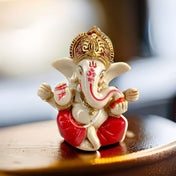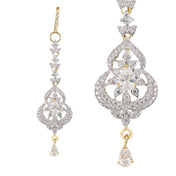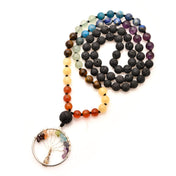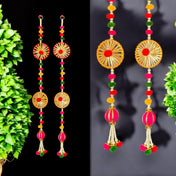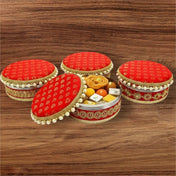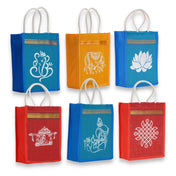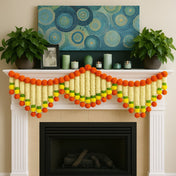Introduction
Maa Durga, a powerful and revered goddess in Hindu mythology, embodies the divine feminine energy that protects, nurtures, and empowers. Celebrated widely for her strength and compassion, she symbolizes the triumph of good over evil. Navratri, a vibrant nine-day festival, honors this feminine divine power through devotion and elaborate rituals. The festival highlights The Nine Avatars of Durga, known as Navadurga, each day dedicated to a different manifestation of Maa Durga. These avatars represent various aspects of life, spirituality, and cosmic energy, guiding devotees on a journey of inner transformation and resilience.
LoveNspire embraces the spiritual essence of Navratri by weaving cultural heritage into contemporary lifestyles. Through exquisite Navratri decorations, such as our candle holder t-light stand which is perfect for Diwali and Navratri celebrations, and thoughtfully curated collections that include stunning artificial marigold flowers garlands for home party door hanging or decor during these festivals. We celebrate the rich symbolism of Maa Durga’s nine forms. Each form represents a unique aspect of life and spirituality. For instance, Day 2 of Navratri is dedicated to Maa Brahmacharini who embodies penance and devotion. You can read more about this in our detailed blog post here. Our offerings not only foster meaningful connections across communities but also honor tradition with authenticity and style.
The Spiritual Significance of Navratri 2025
Navratri festival stands as a powerful celebration in Hindu traditions, symbolizing the triumph of good over evil. This nine-day observance honors the feminine divine power, embodied by Goddess Durga, who represents strength, courage, and the protective energy that restores cosmic balance.
Empowerment Through the Feminine Divine Devi
Goddess Durga’s energy, known as Shakti, inspires empowerment by reminding devotees of the strength inherent in womanhood and the universal force that nurtures life. Worship during Navratri encourages cultivating inner resilience and spiritual growth, emphasizing the vital role of feminine energy in sustaining harmony.
Rituals and Cultural Practices During Durga Puja
Each day of Navratri is marked by specific rituals that invite devotees to connect deeply with the Nine Avatars of Maa Durga. Common practices include:
- Fasting to purify body and mind
- Chanting mantras and hymns dedicated to each form of the goddess
- Decorating altars with vibrant flowers, lamps, and sacred symbols
- Performing traditional dances like Garba and Dandiya, expressing joy and devotion
These customs vary regionally but share the intention of honoring divine power and inviting positive transformation.
Nine Avatars of Goddess Durga Project Unity and Global Cultural Expression
Navratri transcends geographical boundaries, bringing together diverse communities worldwide in celebration. The festival fosters a shared cultural identity while inviting appreciation for Indian heritage through music, art, and communal gatherings. It acts as a bridge connecting people to their roots and to each other, nurturing a vibrant sense of belonging through cultural expression.
Understanding The Nine Avatars of Maa Durga: Day-by-Day Guide
Day 1: Shailaputri – Daughter of the Mountains
The Navadurga, or the Nine forms of Durga, each represent unique aspects of divine feminine energy. The festival of Navratri begins with Shailaputri, whose name literally means Daughter of the Mountain. This form of Maa Durga embodies the primal strength and unwavering stability found in nature itself, symbolizing the foundation of life’s power.
Nature symbolism plays a vital role in Shailaputri’s representation. She is often depicted seated on her vahana, the bull Nandi, which signifies strength and determination. Her right hand holds a trident (trishul), a weapon that represents the destruction of evil, while the left hand carries a lotus flower, symbolizing purity and spiritual awakening.
Devotees honor Shailaputri by wearing red, a color that stands for energy and vitality. The rituals performed include offering flowers, fruits, and performing puja at dawn to seek her blessings for courage and resilience throughout the Navratri festival. Chanting her mantras invokes the nurturing yet powerful energy she embodies, preparing worshippers for the spiritual journey ahead. This first day sets a tone of respect for nature's raw power and the inner strength that flows from it, grounding the festival's spiritual essence in the enduring forces of earth and life.
Day 2: Brahmacharini – The Symbol of Discipline and Self-Discipline
Brahmacharini, the second form of Navadurga, represents unwavering devotion and spiritual discipline. Her name means "one who practices penance," reflecting a seeker's journey toward enlightenment through self-control. She is depicted holding a rosary (japamala) in one hand and a water utensil (kamandalu) in the other, symbolizing purity, patience, and determination. During Navratri, worshipping Brahmacharini encourages devotees to develop inner strength and perseverance, mirroring her disciplined spirit. This day emphasizes the significance of facing difficulties with calm determination, an essential part of understanding the Nine Avatars of Durga: Understanding Each Day of Navratri and their deeper meanings beyond mere ritual.
Day 3: Chandraghanta – The Bravery Avatar with Half-Moon Bell
Chandraghanta, the third form in the Navadurga, represents fearless courage mixed with compassion. Her name comes from the crescent moon (Chandra) shaped like a bell (Ghanta) on her forehead, symbolizing the awakening of bravery and readiness to fight evil. In this form, she is depicted with ten arms holding various weapons, riding a tiger, and having a radiant golden complexion that reflects both strength and calmness. Devotees honor Chandraghanta through specific rituals and powerful mantras, seeking protection and mental resilience. By reciting her mantra, they cultivate determination to overcome obstacles and align their spiritual intentions with the cosmic energy she embodies. Worshipping Chandraghanta inspires inner bravery while nurturing a compassionate spirit.
Day 4: Kushmanda – Creator of the Universe with Divine Smile
Kushmanda, one of the Navadurga, embodies the cosmic energy that fuels the universe’s creation. Known as the creator of the universe, her name combines “Ku” (a little), “Ushma” (warmth), and “Anda” (egg), symbolizing the origin of life from the cosmic egg through her radiant smile. This avatar represents the sun’s vibrant radiance, illuminating existence with vitality and positivity. Devotees seek Kushmanda’s blessings to awaken inner strength, enhance health, and invite prosperity. Her worship on the fourth day of Navratri celebrates the divine creative force sustaining all life, reminding us of the continuous cycle of energy that supports growth and renewal.
Day 5: Skandamata – The Motherly and Nurturing Warrior Goddess
Skandamata represents the deep motherhood aspect of the Navadurga, blending nurturing kindness with immense power. Her name literally means "Mother of Skanda," referring to her divine child, Kartikeya, the god of war. In artwork, she is often shown sitting on a fierce lion, symbolizing bravery and strength, while gently holding her baby son, representing unconditional motherly love and protection. This combination shows the balance between softness and bravery, encouraging followers to accept both care and bravery in their lives. Worshipping Skandamata during Navratri brings blessings for family unity, strength, and spiritual knowledge.
Day 6: Katyayani – Fierce Destroyer of Evil
Katyayani stands out among the Navadurga as the fierce warrior goddess, embodying strength and valor in the battle against demons and negative forces. Revered as a powerful form of Durga, she symbolizes the courage needed to confront and overcome adversity in life. Her image is often depicted with multiple arms wielding weapons, reflecting her readiness to protect righteousness and dispel evil.
- Role: Warrior goddess combating darkness and negativity
- Invocation: Embraced culturally to inspire bravery and resilience
- Significance: Encourages devotees to face challenges with unwavering determination
Day 7: Kalaratri – The Dark Goddess of Destruction
Kalaratri is one of the powerful Navadurga forms of goddess Durga. She represents the fierce and dark side of the goddess who uses her unstoppable power to destroy evil and negativity. Her appearance is awe-inspiring—usually shown with a dark skin tone, unkempt hair, and an intense expression—representing the removal of fear and ignorance. The Nine Avatars of Durga: Understanding Each Day of Navratri explains how she cleanses the spiritual world by destroying, making way for new beginnings. Devotees perform specific rituals to please Kalaratri, asking for protection from harmful forces. During her worship, mantras are chanted to call upon her powerful energy for defense against danger and to eliminate darkness from one's life. This avatar's frightening appearance carries deep meaning: darkness is not only scary but also serves as a protective force that safeguards purity.
Day 8: Mahagauri – Symbolizing Purity and Serenity
Mahagauri is the eighth form of the Navadurga, representing purity and spiritual tranquility. She wears pristine white garments, symbolizing cleansing and renewal, and guides devotees towards inner peace and clarity. This form brings calmness amidst the lively celebrations of Navratri, encouraging reflection and purification of the mind, body, and soul. Her peaceful expression contrasts with the fierceness of earlier forms like Kalaratri, showing the different energies within the Nine Avatars of Durga. Worshipping Mahagauri teaches us to embrace gentleness while nurturing strength, which is crucial for holistic empowerment during this sacred festival.
Day 9: Siddhidhatri – The Goddess Who Grants Wisdom and Supernatural Powers
Siddhidhatri is the last form of the nine goddesses worshipped during Navratri. She represents the peak of spiritual enlightenment and the bestowal of siddhis—supernatural abilities that help devotees overcome worldly obstacles. Known as the goddess of wisdom, Siddhidhatri symbolizes the ultimate achievement of spiritual goals attained through devotion and determination throughout Navratri.
Symbolism and Significance
On this day, Siddhidhatri is depicted seated on a lotus, holding symbols of knowledge and power. This imagery reflects her role as a divine teacher, imparting wisdom to her devotees. As such, she is revered as the source of guidance and strength in navigating life's complexities. Devotees offer prayers to Siddhidhatri seeking success in their endeavors, clarity in decision-making, and inner resilience to face challenges head-on. The day serves as a reminder that divine grace plays a crucial role in achieving victories beyond physical realms—connecting individuals to higher consciousness and spiritual truths.
Completing the Cycle
The worship of Siddhidhatri brings closure to the cycle initiated by Shailaputri, the first avatar. It signifies the link between nature's primal energy represented by Shailaputri and enlightened wisdom embodied by Siddhidhatri—a transformative journey experienced through all nine forms of Durga. This sacred observance highlights how devotion during Navratri can lead to profound spiritual growth and empowerment—enabling devotees to tap into their inherent potential and overcome any obstacles they may encounter on their path.
Integrating Tradition with Modern Celebration Through LoveNspire
LoveNspire is a brand that aims to enhance the Navratri experience by combining traditional elements with a contemporary touch. Their collection of ethnic products for Navratri reflects their dedication to quality, cultural authenticity, and innovation.
Elevating Navratri Decoration
- Navratri decoration ideas inspired by the Nine Avatars bring sacred symbolism into contemporary homes. For example, wall hangings, rangoli stencils, and vibrant fabrics can feature designs representing Shailaputri’s mountain strength or Chandraghanta’s bravery.
- Handmade pooja items like intricately carved diyas and traditional bells add a spiritual aura while honoring ancient craftsmanship.
- Color themes aligned with each day’s goddess avatar encourage immersive surroundings that resonate with the festival’s spiritual rhythm.
Thoughtful Navratri Gifts Rooted in Heritage

- Selecting gifts that embody devotion and cultural richness enhances the emotional value of celebrations. Jewelry pieces reflecting traditional designs or home décor items infused with Indian artistry become cherished keepsakes.
- Personalized offerings from LoveNspire allow expression of heartfelt wishes while preserving the cultural narrative behind Navratri. These personalized gifts enhance the emotional connection during this festive period.
- Gift sets combining ritual essentials with decorative accents provide meaningful ways to honor loved ones during this auspicious time.
By incorporating age-old traditions into modern lifestyles, LoveNspire transforms Navratri from a mere religious observance into an inspiring celebration of life.
Essential Pooja Items for Worshipping The Nine Avatars During Navratri
Performing the Navratri pooja with reverence involves a thoughtful selection of navratri pooja items that honor each of the Nine Avatars of Maa Durga. A well-prepared pooja setup not only reflects devotion but also preserves the sanctity and vibrancy of rituals passed down through generations.
Traditional Navratri Pooja Items List
Here is a list of traditional items used during Navratri pooja:
- Kalash (Sacred Pot): Symbolizes the presence of divinity and prosperity.
- Flowers: Fresh marigolds, hibiscus, and lotus petals for offering to the goddess.
- Incense sticks and Dhoop: Create a fragrant ambiance invoking spiritual energy.
- Camphor (Kapoor): Used during aarti to purify the surroundings.
- Diya (Oil Lamps): Lighted to dispel darkness and welcome divine light.
- Fruits and Sweets: Offerings representing gratitude and abundance.
- Red Cloth or Sari: Draped around the idol or altar as a sign of auspiciousness.
- Sindoor (Vermilion) and Kumkum: Essential for marking the forehead and symbolizing feminine power.
- Betel Leaves and Nuts: Traditional offerings signifying respect and auspiciousness.
- Rice Grains (Akshata): Used in blessings and rituals during the pooja.
- Navadurga Idols or Images: Central to worship, depicting each avatar’s unique form.
LoveNspire curates an exclusive collection of navratri pooja items crafted by skilled artisans who blend traditional techniques with contemporary quality standards. Each piece—from hand-painted idols to eco-friendly diya holders—embodies authenticity and craftsmanship, ensuring your Navratri rituals resonate with cultural richness.
Selecting these handcrafted essentials from us supports artisans preserving Indian heritage while enhancing your spiritual experience. The thoughtfully designed pooja sets serve not only as ritual tools but as meaningful expressions of devotion that connect hearts during this sacred festival. Additionally, incorporating elements like a Happy Navratri banner, can enhance your pooja setup. This Indian traditional cloth backdrop, measuring 5x8 feet, serves as a beautiful decorative piece for your Navratri celebration, adding an extra touch of authenticity and festivity to your worship space
Conclusion
Celebrating Navratri is a wonderful opportunity to learn about and connect with the nine forms of Goddess Durga. Each day of the festival represents a different avatar, and by understanding their significance, we can embody the values they represent: strength, purity, courage, and wisdom. Here are some ways to make your Navratri celebration more meaningful:
- Blend tradition with modernity: Find ways to incorporate your personal style and contemporary elements into your celebrations while still honoring the traditions.
- Support local artisans: Choose brands like LoveNspire that offer authentic, handcrafted products made by skilled artisans. This not only preserves our heritage but also empowers local communities.
- Connect with others: Organize community events or participate in group celebrations during Navratri. This fosters cultural unity and creates a sense of belonging among diverse groups.
By embracing these practices, we can transform our Navratri experience into one that goes beyond mere festivities. It becomes an opportunity for growth, learning, and connection with ourselves and those around us.









